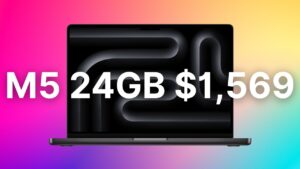

If a new rumor is to be believed, the iPhone 17 Pro might be available in a familiar-looking Sky Blue color option.
The iPhone 17 Pro might be available in a color similar to the Sierra Blue of the iPhone 13 Pro. Image Credit: AppleInsider
As a whole, the iPhone 17 Pro is expected to introduce radical visual changes, with many sources claiming the device will feature a redesigned camera bump. We’ve also heard a lot about the materials and features of the iPhone 17 Pro, but there have been few claims about the color options Apple plans to offer.
Now, leaker Majin Bu claims to have the details on the exclusive color that’s expected to debut with Apple’s 2025 flagship. In a post on their website, the leaker says that the iPhone 17 Pro will be available in “YuangFeng Blue” or Sky Blue, which would look similar to the recently introduced M4 MacBook Air and M3 iPad Air.
Rumor Score: 🤔 Possible
Continue Reading on AppleInsider | Discuss on our Forums






